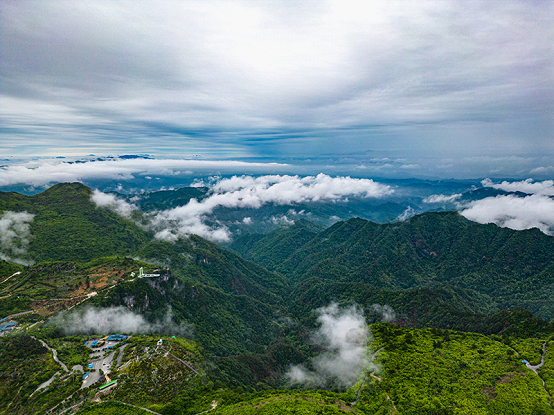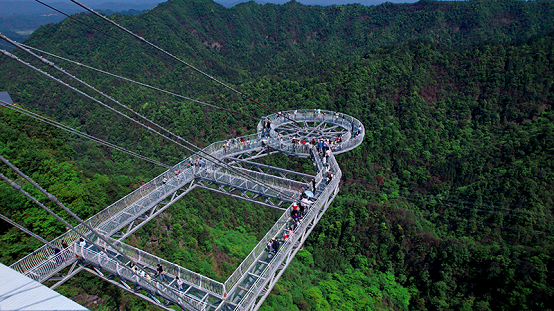Huangyan Ecotourism Area is located in the southeastern suburbs of Huaihua, 21 kilometers from the downtown area. It is part of a branch of the Xuefeng Mountains, with an average altitude close to 1,000 meters. As a rare mountainous plateau landform in southern China, its temperature is typically 5 to 7°C cooler than the urban center year-round, especially in summer, making it a summer resort destination in Hunan Province. Its forest coverage rate reaches 81%, covering an area of 55.86 square kilometers. The area is rich in natural resources and boasts a beautiful ecological environment. The region’s abundant and precious tourism resources include karst caves, hot springs, primitive secondary forests, ecological canyons, ancient villages, vast farmland, and expansive flower seas. Known as the “Southern Tibet”, Huangyan’s ecological endowment is especially remarkable. It has been recognized as a national 4A tourist attraction and a national agricultural science and technology park. Baima Village and Daping Village in Huangyan have been listed among China’s beautiful leisure villages, national key rural tourism villages, national civilized villages and towns, national forest villages, and provincial tourism resorts, making them important attractions on the premium travel routes in western Hunan (Daxiangxi).
In recent years, Huangyan Tourism Resort, relying on its advantageous location, transportation, and ecological resources, has adhered to the strategy of “tourism development drives poverty alleviation, and poverty alleviation promotes tourism development”. It implements the “scenic area + company + tourism + poverty alleviation” model, encouraging villagers to participate in shareholding cooperatives. This approach is one of the five key poverty alleviation models promoted in Hunan Province. Huangyan’s “tourism + poverty alleviation” model was highly praised by Yan Junqi, former vice chairman of the National People’s Congress. In 2019, its tourism poverty alleviation model was included in the World Tourism Alliance’s tourism poverty reduction cases. The scenic area has been awarded the title of “Provincial Tourism Poverty Alleviation Demonstration Base”.

Huangyan has a long history and rich culture, with notable sites such as the Huangyan Peasant Uprising Site and the ancient Xiangxi Trail. Currently operating attractions include Huaihua Grand Canyon and Baima Flower Sea. The main tourism products cover four categories: ecological sightseeing, cultural leisure, outdoor sports, and wellness tourism, which meet visitors’ demand for varied experiences. Key projects and facilities in the scenic area include cliffside plank roads, forest camping, the Sky Eye observation platform, Huashan grass sledding, high-altitude zip lines, rock climbing, glass water slides, aerial cable projects, sightseeing mini-trains, and the Yaochi swimming pool. Accommodation options include cliff wooden cabins, tents, cave camps, Mongolian yurts, RV camping with supporting facilities like parking lots and food streets. Since opening, the scenic area has attracted visitors from over 40 counties/cities in Hunan. It is one of the most influential tourist attractions in Huaihua. A modern eco-agricultural industrial park and a hot spring resort are currently under construction.
For inquiries, please call:
Great Canyon Scenic Spot: 0745-2218111
Baima Scenic Spot, 0745-2511555
(Translated by Yang Hong)


